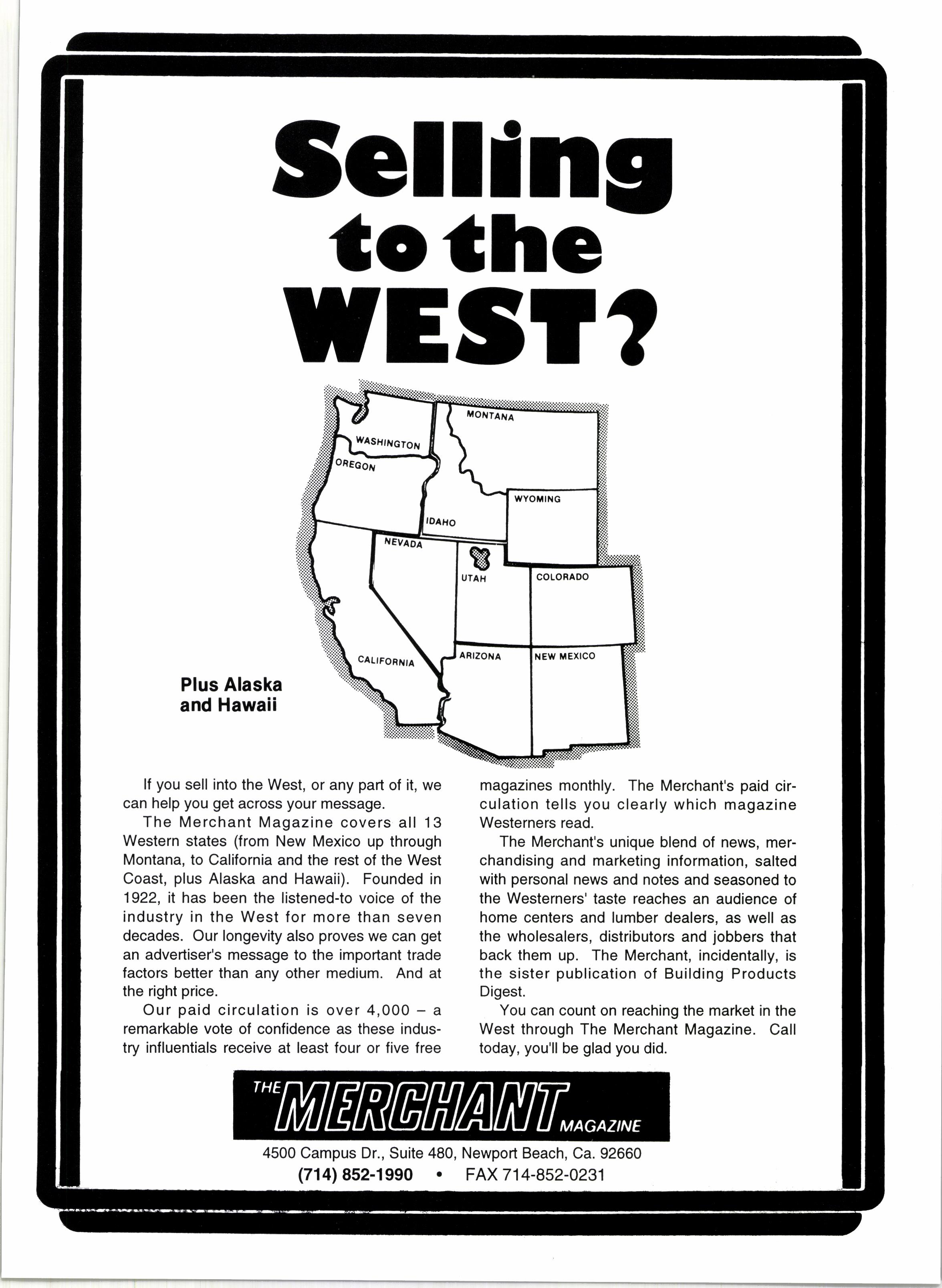
3 minute read
an opportunity)
By Scott Hoffman Manager-Dricon Fire Retardant Hickson Corp.
ard. The increased production of carbon char tends to insulate wood beneath the surface and slows down the rate at which underlying wood is consumed. The carbon dioxide and water vapor dilute combustible gases which reduces flame spread.
There are several brands of FRTW which have these traits. Each brand is produced using its own proprietary formulation, so they have different characteristics and should not be casually interchanged or substituted. Lumber dealers should recognize these differences and ask questions before choosing which brand to sell.
In addition to satisfying basic code qualifications, you might consider other points:
. Performance record. How long has the brand existed and has it proven iselP
National code compliance report. Is there a National Evaluation Report?
Other recognition. Is it acceptable by HUD? L.A. Research Report? New York City? Factory Mutual?
Warranty. What is covered. how long does it extend, and what disclaimers are included?
. Minimum grade standards for the lumber and plywood that is treated.
. Other beneficial properties (e.g., EPA-registered termite and rot resistance).
Furthermore, you will want to consider the service and reliability of the treating company. Does it support your efforts in selling a high margin specialty item or does it set up numerous dealers who revert to commodity selling?
Who buys it? Where is it used?
FRTW is usually purchased by professional builders who are following specifications which must meet a building code requirement for fire protection.
Occasionally a do-it-yourselfer buys FRTW, but that is rare. And occasionally FRTW is used where there is no code requirement (e.g., a stable housing valuable racehorses, a home with expensive paintings, and a private building not easily reached by fire trucks), but this is also rare.
Most frequently, FRTW is used in commercial structures (shopping centers, theaters, restaurants), institutional buildings (schools, government offices, prisons), industrial facilities (warehouses, offices), and multi-family housing (condominiums, townhouses, apartments).
How do I sell it?
Don't bother trying to sell FRTW to someone who doesn't need it. You'll be wasting your time. But, when a customer is looking to buy FRTW, make sure he knows you're in the FRTW business.
TIP #1: Tell contractors you sell it. Even your best customers are not aware of all the products you offer. Don't assume they know you handle
Story at a Glance
How to market fire retardant treated wood choosing a brand to sell ...why it's profitable for dealers.
FRTW. To help you with this, choose a supplier who will provide point-ofpurchase literature, banners and advertising tools, and will show you how to use them.
TIP #2: Check the spec. See which brand is specified and beware of the "or equal" clause. A substitution that fails to perform could become your problem. Before you substitute a brand, ask yourself these questions:
. Does this alternative product have the same warranty?
Does the product have the same water absorption (hygroscopicity) and corrosion properties?
. Does the product offer the same termite protection?
. Does the product have the same approvals?
Does the product have the same strength properties?
TIP#3: Askfor the order.
Let the customer know you want his business and you're ready to supply him. Wrap up the sale by suggesting other relevant merchandise such as saw blades, nails, adhesives and maybe even some CCA-treated wood.
TIP #4: Treat phone inquiries with respect.
For small orders of a product, it is not worth a builder's time to shop around; he'll usually stop at his favorite lumberyard and buy whatever is available. Large orders merit more of his effort. When a builder calls on the phone - for FRTW or any other material - he may be working on a major purchase. So, give him at least as much attention as you would devote to an in-person visit: talk about his project, ask what the spec says, ask for the order, and remind him of your services and terms. Focus on the call; don't divide your attention by trying to do some paperwork while you talk.
Wood that won't burn is a reality, and it presents an excellent sales opportunity for many contractor-oriented yards. FRTW is purchased by the same customers already being serviced, it extends the product line without requiring a large number of SKUs, and it can return an appealing profit.










